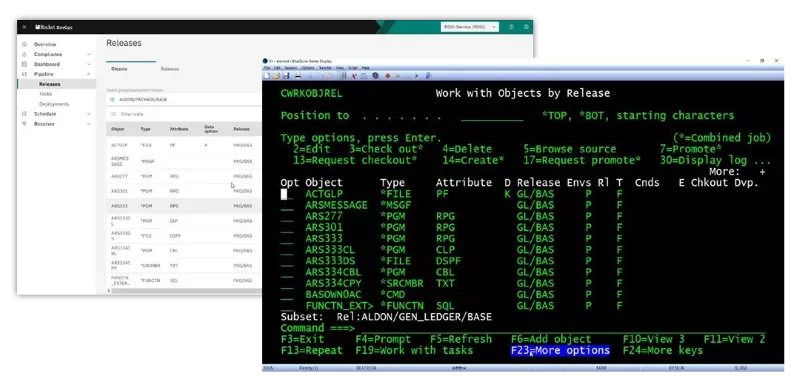Rocket DevOps simplifies multi-code development for IBM i, bringing all your code under one DevOps environment. Its built-in capabilities empower agile best practices, reduce manual tasks, and streamline compliance.
Rocket® DevOps for multi-code development with IBM® i
Centralize, standardize, and automate IBM® i development.
No more DevOps silos
IBM i development can no longer operate in silos that stifle innovation, complicate project management, and restrict code visibility for developers. Rocket® DevOps, a comprehensive application lifecycle management solution, enables organizations to manage multi-code development while retaining organizational structure. It also provides the flexibility required for rapid application and process development, regardless of where applications reside or the code used.
Rocket Devops for IBM i
Multi-code development for IBM i owners
Consolidate multi-language development for efficient SDLC management.
Build CI/CD pipelines and enable shift-left testing.
Integrate Git for RPG and other third-party tools.
Generate compliance reports at the press of a button.

Compatible with multiple operating systems
Consolidate your DevOps development environment
Support is available for Windows®, Linux®, UNIX®, and modern languages like Angular and HTML5. This makes Rocket DevOps the best choice for organizations seeking to embrace DevOps for multiple operating systems, or looking to standardize software development and delivery processes across diverse systems.
Centralized secure repository provides full visibility into non-RPG systems.
Customizable displays show application details and lifecycle environments.
Automate and scale deployments to thousands of target systems.
Integrate process and authority checks into version control workflows.
SMART. Secure. Centralized.
Shift testing left for IBM i development
Enable stakeholders to streamline IBM i development with continuous, automated testing and a standardized DevOps environment. Simplify multi-environment testing, accelerate time-to-market, and ensure stable production phases.
Detect bugs early with automated testing throughout the SDLC.
Provision environments for unit, integration, and regression testing.
Standardize processes to enable multi-code testing for greater predictability.
Free teams and stakeholders for higher-value tasks with automation.
Application management done right
Drive object-oriented development with DevOps
Rocket DevOps displays a list of objects associated with an IBM i application release through a format familiar to developers. It includes all objects from every library within the application, eliminating the need to go to each library and source files individually. Status information for each object is clearly shown on a single line.
Reduce maintenance windows: Background large file conversion.
Avoid time-consuming errors such as level checks.
Automate deployment in SDLC.
Integrate with third-party tools like LANSA, JD Edwards, and 2E.
